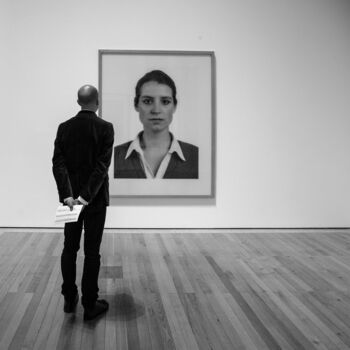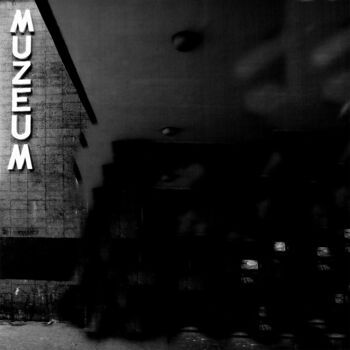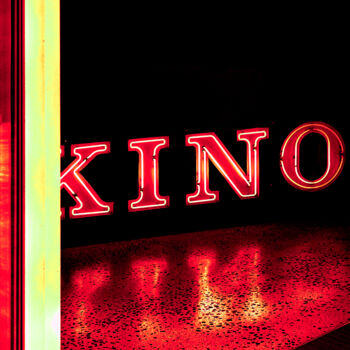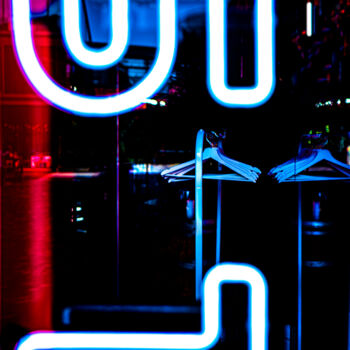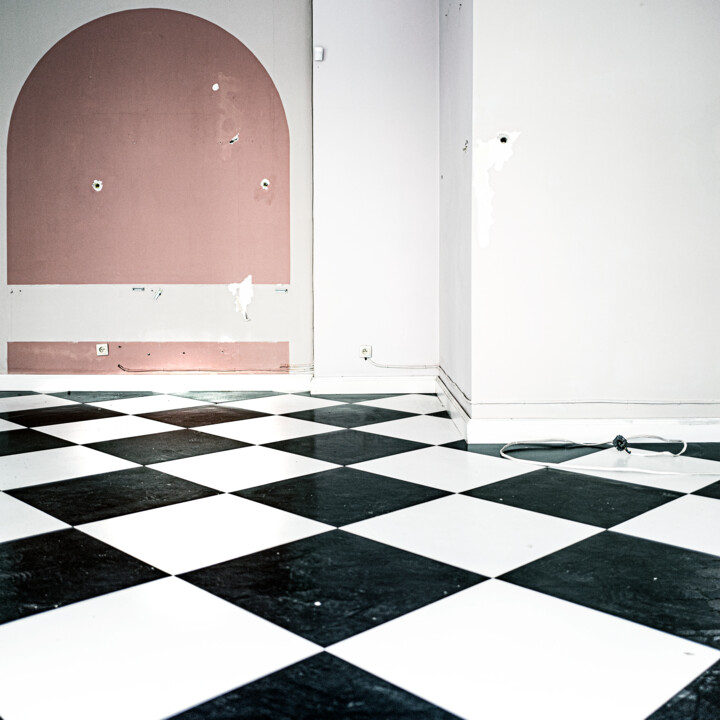

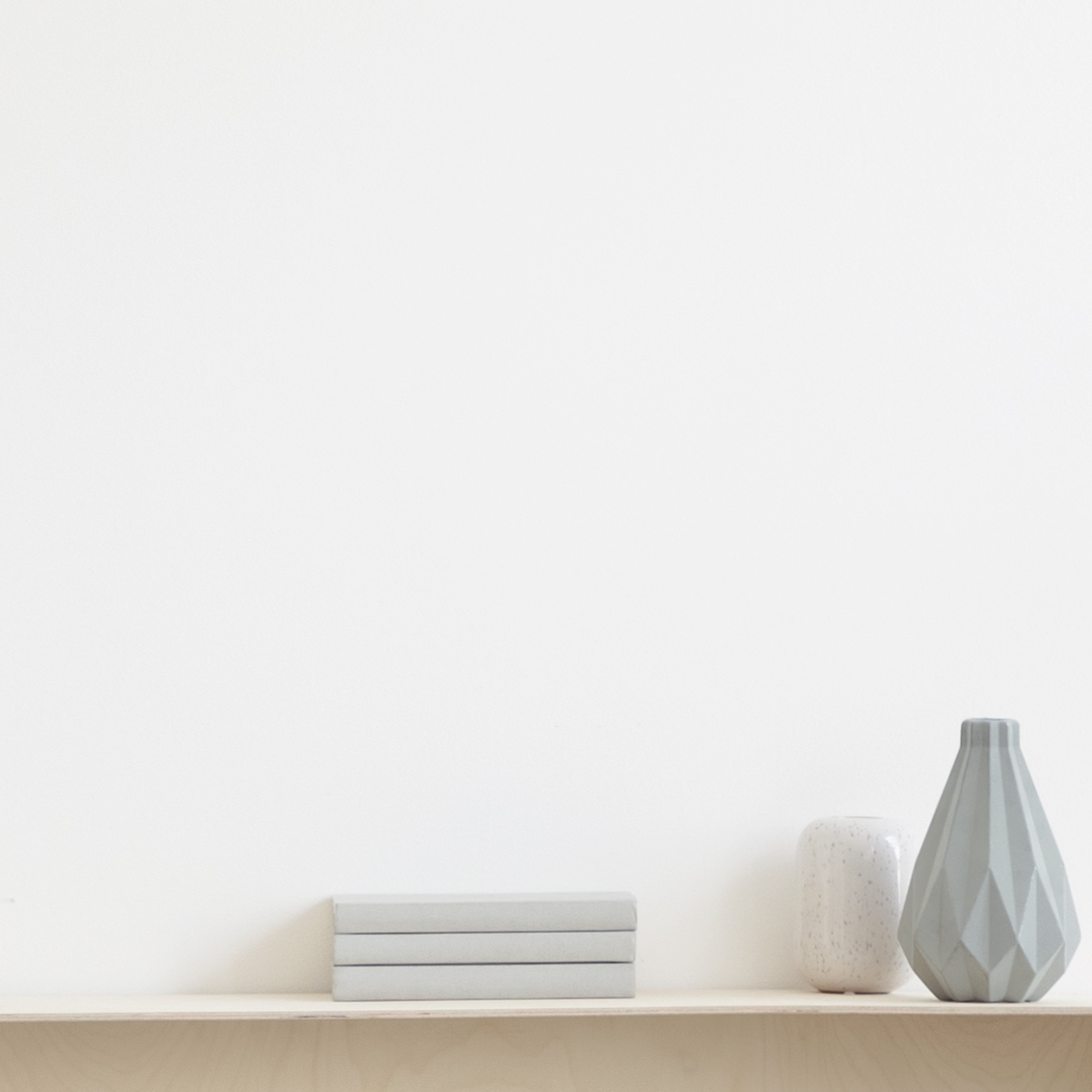
Faites-nous savoir si vous souhaitez voir plus de photos de cette œuvre !
- Arrière de l'oeuvre / Côté de l'oeuvre
- Détails / Signature / Surface ou texture de l'œuvre
- Oeuvre en situation, Autre...
Empty Room # 27. After Vermeer (2022) Photographie par Marta Lesniakowska
Plus d'info
- Emballage (Boîte ou emballage en carton) Toutes les œuvres sont expédiées soigneusement protégées et assurées, avec un transporteur premium.
- Suivi Suivi de commande jusqu'à la livraison à l'acheteur. Un numéro de suivi vous sera fourni afin que vous puissiez suivre le colis en temps réel.
- Délais Livraison dans le monde entier en 3 à 7 jours (Estimation)
- Douanes non incluses Le prix ne comprend pas les frais de douane. La plupart des pays n'ont pas de taxe à l'importation pour les œuvres d'art originales, mais vous devrez peut-être payer la TVA réduite. Les frais de douane (le cas échéant) sont à calculer à l'arrivée par le bureau de douane et seront facturés séparément par le transporteur.
Plus d'info
- Certificat d'authenticité en ligne traçable Les certificats d'authenticité peuvent être vérifiés en ligne à tout moment en scannant le code de l'oeuvre.
- Certification de la cote artiste Les experts étudient l'œuvre et la carrière d'un artiste puis établissent une cotation moyenne indépendante et fiable. La cotation moyenne permet de situer l'artiste sur une gamme de prix pour une période donnée. Les experts peuvent également être sollicités pour établir une estimation plus précise pour une œuvre en particulier.
Plus d'info
Paiement 100% sécurisé avec un certificat SSL + 3D Secure.
Plus d'info
-
Œuvre d'art originale (One Of A Kind)
Photographie,
Photographie numérique
/
Photographie non manipulée
sur Papier
- Dimensions Hauteur 15,8in, Largeur 15,8in
- État de l'œuvre L'oeuvre est en parfait état
- Encadrement Cette oeuvre n'est pas encadrée
- Catégories Photographies à moins de 5 000 $US Minimalisme Architecture
W swojej strategii badacza-artysty przywołuję więc pojęcie cytatu/ powtórzenia jako naczelnej zasady re-prezentacji, która odsyła do innych obrazów, ikonograficznych zapożyczeń z zachodniej tradycji malarskiej, które są „wynajdywane“ w rzeczywistej przestrzeni po to, by stały się impulsem transmedialnym. W tym wypadku moja fotografia ujawnia dialog z uznawaną za symbol męskości twardą geometrią czarno-białej szachownicy, kraty (grid), siatki przecinających się linii, a więc figury uznanej za typową dla wszystkich artystów uważających się za awangardę. A dla Rudolfa Arnheima (ur. 1904), badacza percepcji wizualnej i sensorycznej krata, jako specyficzny wzór przestrzenny i graficzny, uznana została za jedną z podstawowych konstrukcji percepcyjnych zawartych w dziele sztuki, którego forma i treść są ze sobą nierozerwalnie złączone („Power and the Center”, 1982; „The Dynamics of Architectural Form”, 1977). Jest to czytelne w mojej fotografii, która w tym kontekście okazuje się wprost semantycznym dyskursem genderowym, gdy widzimy, jak „męska” czarno-biała kratownica wchodzi w bezpośredni, fizyczny kontakt ze współczesnymi kobiecymi stereotypami: różową arkadą jako konwencjonalnym motywem i symbolem kojarzonym z kobiecością.
W ten sposób moja fotografia staje się wydarzeniem ontologicznym. Znaczenie ma tu formalny język, jakiego użyłam: pole obrazowe jest dyscyplinowane zgodnie z zasadami poetów-minimalistów: ekonomia szczegółów, odkrywanie ukrytych podtekstów i aluzji w niezauważalnych przedmiotach i fragmentach codziennej rzeczywistości, powierzchowności i przyziemności rzeczy. Ostrość, bezpośredniość, prostota ujęcia, precyzja kompozycji – wszystko to pokazuje, że fotografia nie jest kontyngentna/przypadkowa, ale, tak jak malarstwo, jest zdolna wytwarzać obrazy mocne, które realizują porządek kompozycyjny jako zasadę zwartej i zdyscyplinowanej budowy obrazu (ml).
A work from the series 'Empty Rooms', which has been ongoing for several years. In such empty deserted interiors treated as a variation of still life, an old iconographic strategy that never compromises itself is activated. This empty room with its pink arcade and black-and-white chequered floor evoked in my remembering gaze the paintings of Johann Vermeer, the first artist of the modern era, who, like many artists of his era, built up a pictorial field using such geometric elements to create the illusion of three-dimensional space on a flat surface, and used a camera obscura to achieve this effect. My photographic series of 'Empty Rooms' goes some way to penetrating the secrets of his workshop: it shows the 'Vermeerian' interior as a mise en scene, a set that awaits the characters in his paintings.
Thus, in my strategy as a researcher-artist, I invoke the notion of quotation/repetition as a guiding principle of re-presentation that refers back to other images, iconographic borrowings from the Western painterly tradition that are 'invented' in actual space in order to become a transmedial impulse. In this case, my photograph reveals a dialogue with the hard geometry of the black-and-white chessboard, the grid of intersecting lines, considered a symbol of masculinity, a figure considered typical of all artists who consider themselves avant-garde. And for Rudolf Arnheim (b. 1904), a researcher of visual and sensory perception, the grid as a specific spatial and graphic pattern was considered one of the basic perceptual constructs contained in a work of art, whose form and content are inextricably linked ('Power and the Center', 1982; 'The Dynamics of Architectural Form', 1977). This is clear in my photography, which in this context turns out to be a straightforwardly semantic gender discourse, as we see how the 'masculine' black and white truss comes into direct physical contact with contemporary feminine stereotypes: the pink arcade as a conventional motif and symbol associated with femininity.
In this way, my photography becomes an ontological event. The formal language I have used is significant: the pictorial field is disciplined here according to the principles of the poets-minimalists: economy of detail, the discovery of hidden subtexts and allusions in unnoticed objects and fragments of everyday reality, the superficiality and mundanity of things. The sharpness, directness, simplicity of the shot, precision of the composition - all of this shows that photography is not contingent/ accidental, but, like painting, is capable of producing strong images that realise compositional order as the principle of compact and disciplined image construction (ml).
Collector's photography, color, digital on archival paper Hahnemuhle Photo Rag Baryta 315g (semi-flash), archival paper, acid-free, signed on the face and on the reverse, dated 2022. Format 40x40 cm in the picture field, with a frame 50x50 cm. not glued, without frame, without damages. Certificate of Authenticity. Archived file: L1210127.DNG
Marta Lesniakowska est une artiste photographe mais aussi, en même temps, historienne et critique d'art, elle fait des recherches sur la culture visuelle. C'est ce qui détermine son approche de la photographie : une stratégie du "regard qui se souvient", qui rappelle des images familières de l'histoire de l'art afin de les transmettre/intertextualiser. Son dialogue avec eux consiste à ce qu’elle se demande s'il est possible d'évoquer leurs significations et ce qu'ils sont ou peuvent être aujourd'hui. Elle est fasciné par la lumière - son rôle dans la construction de l'image, le parergon qui crée l'image. C'est pourquoi, dans la photographie de rue, elle analyse le jeu de la lumière et de l'obscurité, la relation entre le net et le flou et l'interpénétration des images comme des réalités simultanées. De cette façon, elle fait ressortir le caractère mystérieux de la ville, en se référant à l'esthétique du cinéma noir et au maître de la photographie de rue du XXe siècle, Saul Leiter.(ml)
Lorsque elle photographie, rien n'est plus ou moins important pour elle ; son regard est souvent régi par les principes des poètes minimalistes : une économie de détails, la découverte de sous-textes et d'insinuations cachés dans des objets invisibles et des morceaux de la réalité quotidienne.
Marta Lesniakowska vit et travaille en Pologne. Ses œuvres font partie de collections publiques (Musée national de Wroclaw, Musée de Bydgoszcz) et de collections privées (Pays-Bas, Danemark, Allemagne, Suède, Suisse, États-Unis).
-
Nationalité:
POLOGNE

- Date de naissance : date inconnue
- Domaines artistiques: Oeuvres d’artistes professionnels,
- Groupes: Artiste professionnel Artistes Contemporains Polonais




